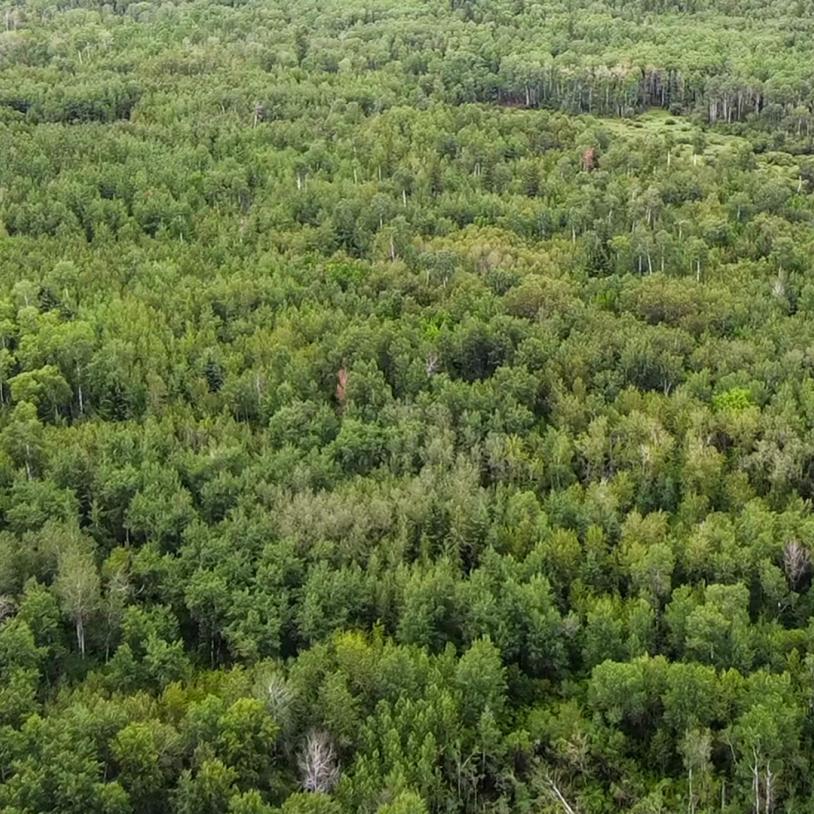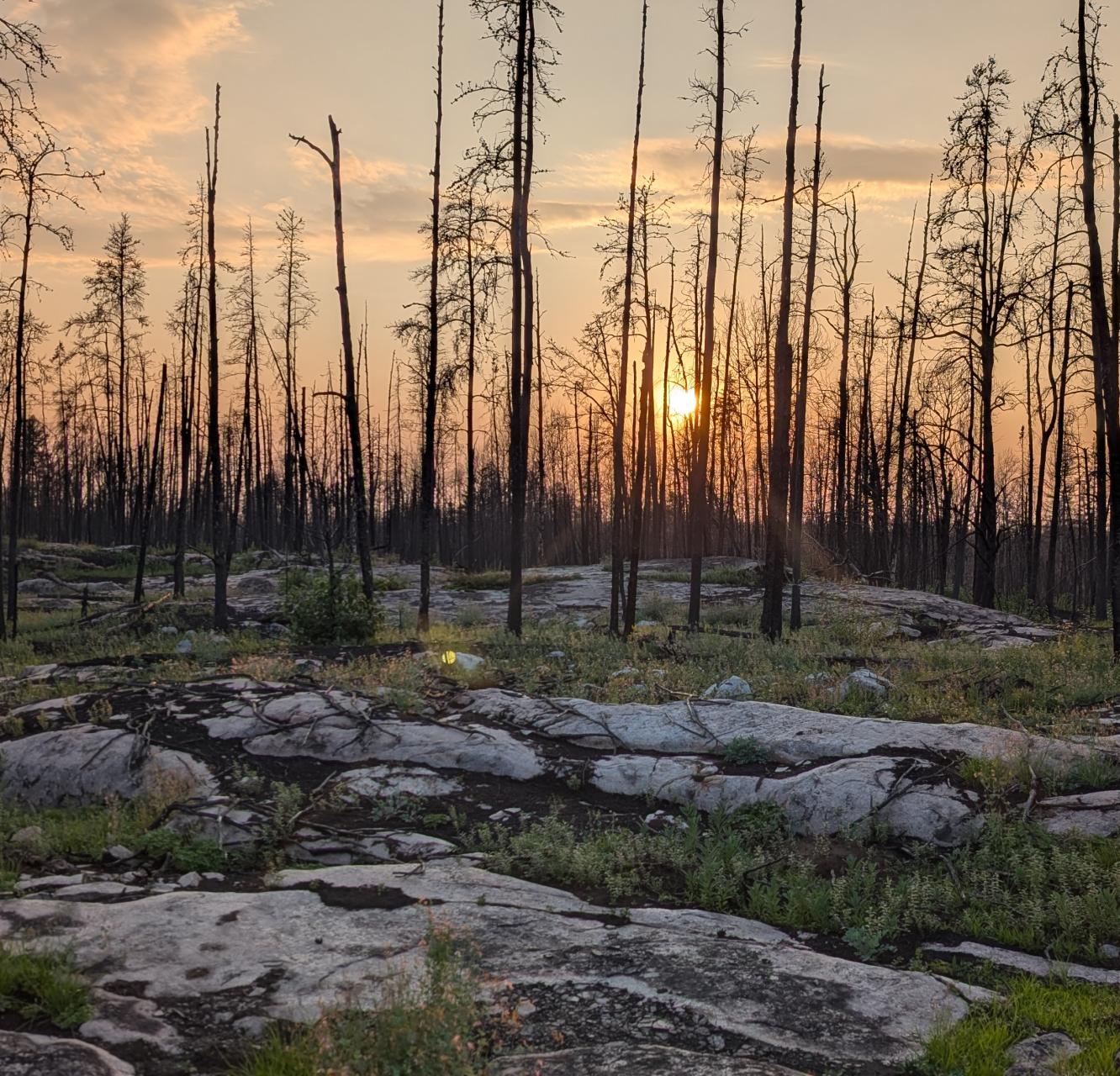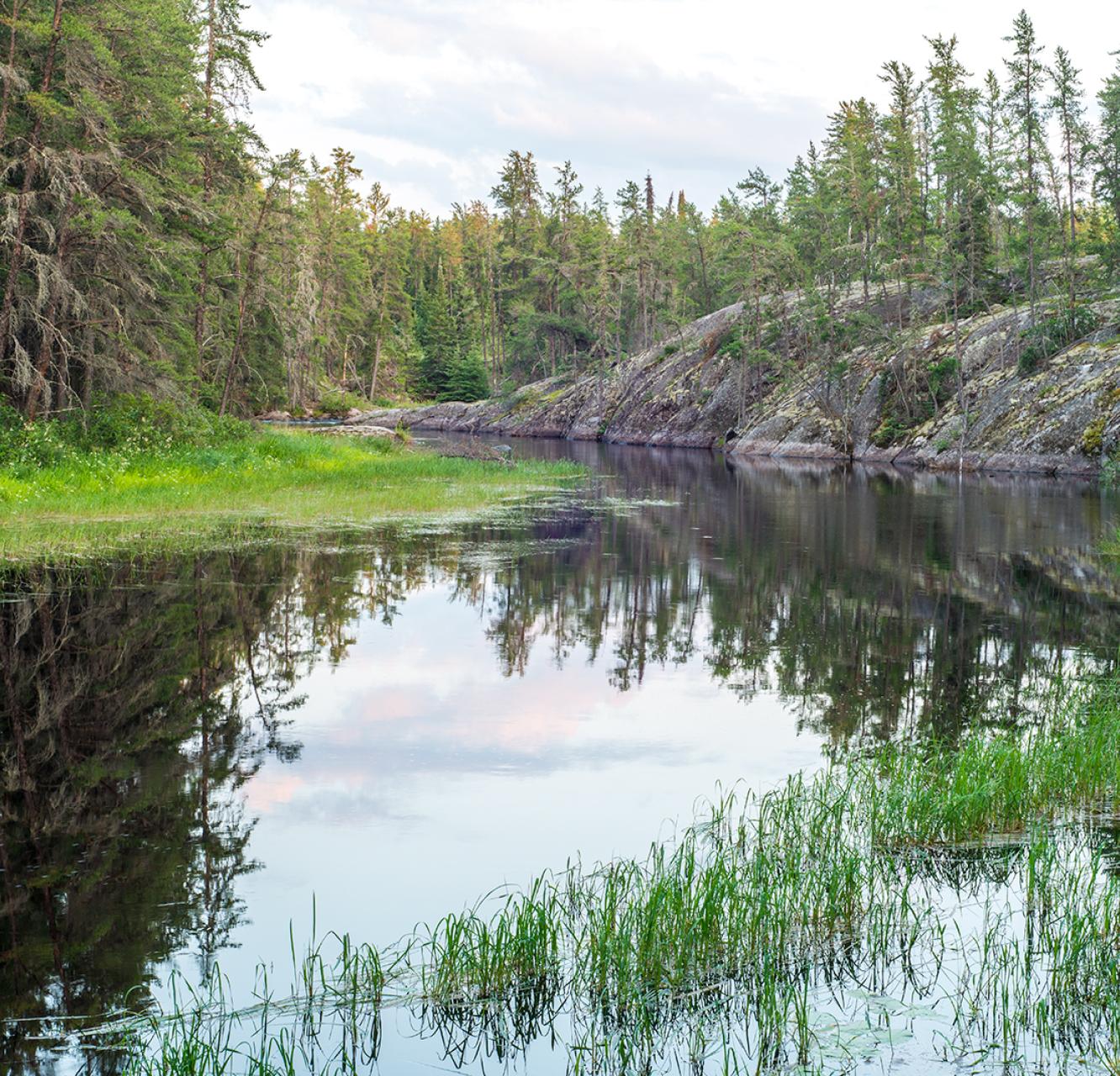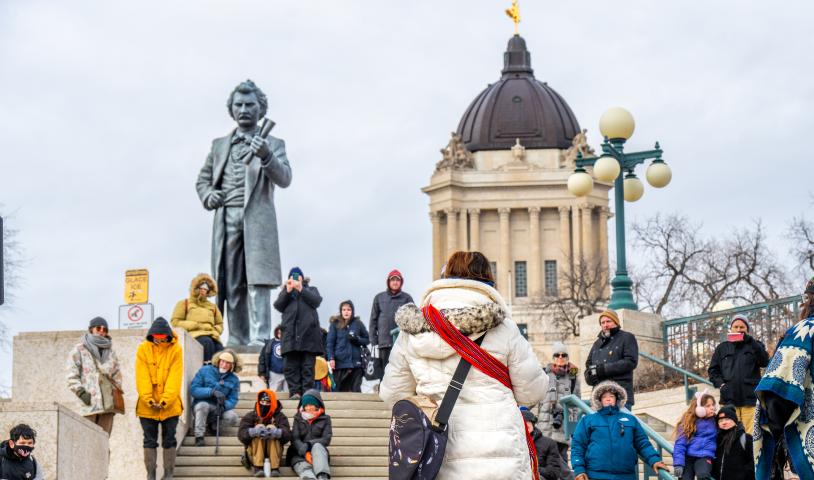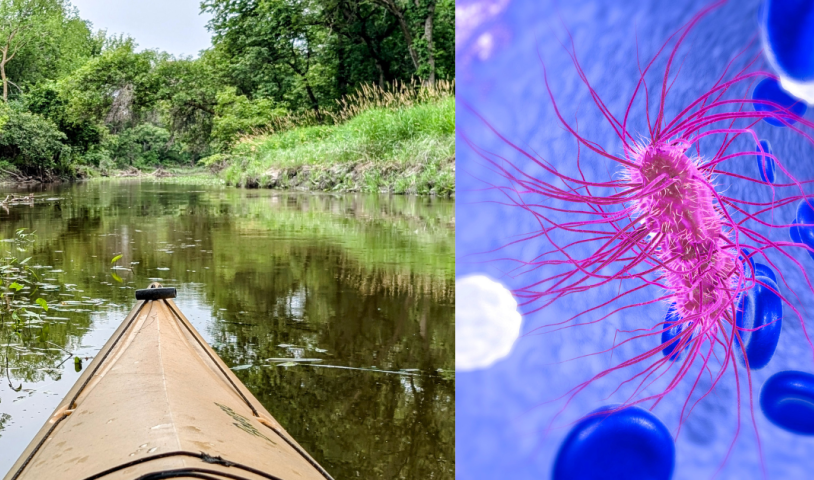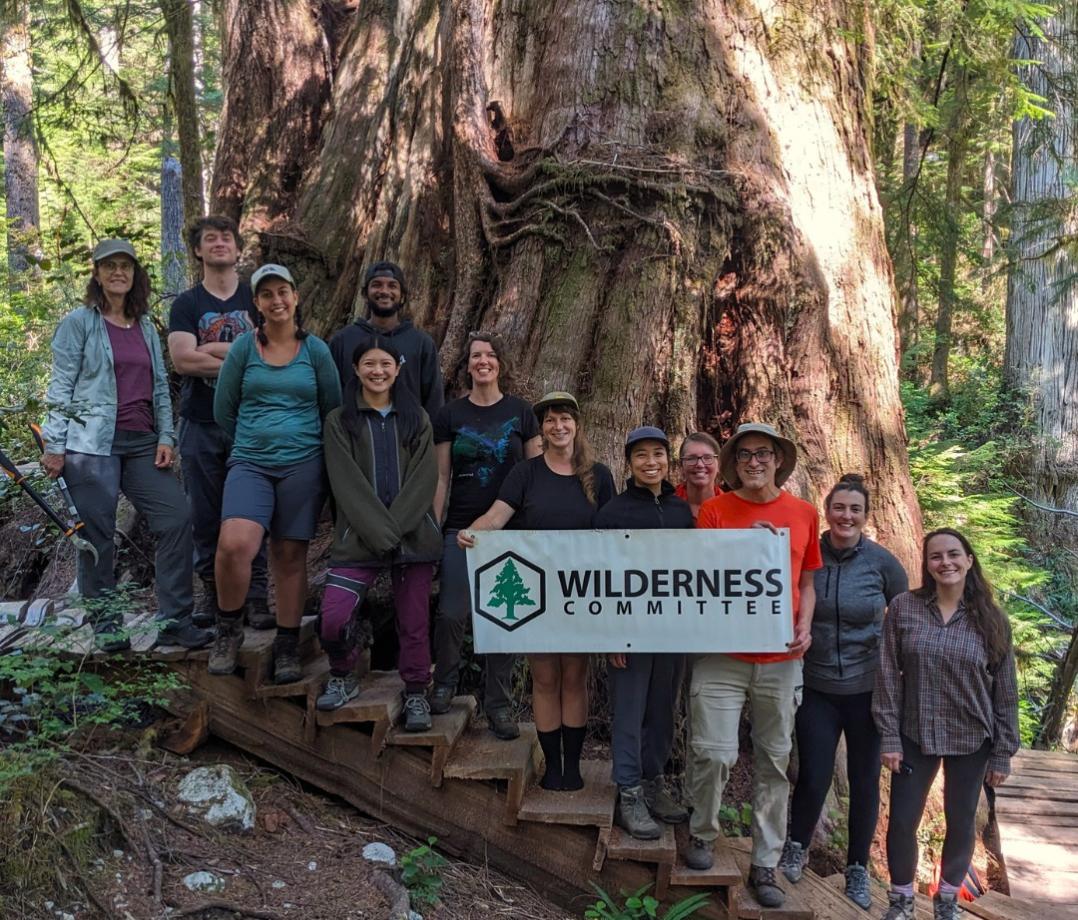The Bird River burnt
Thursday, September 4, 2025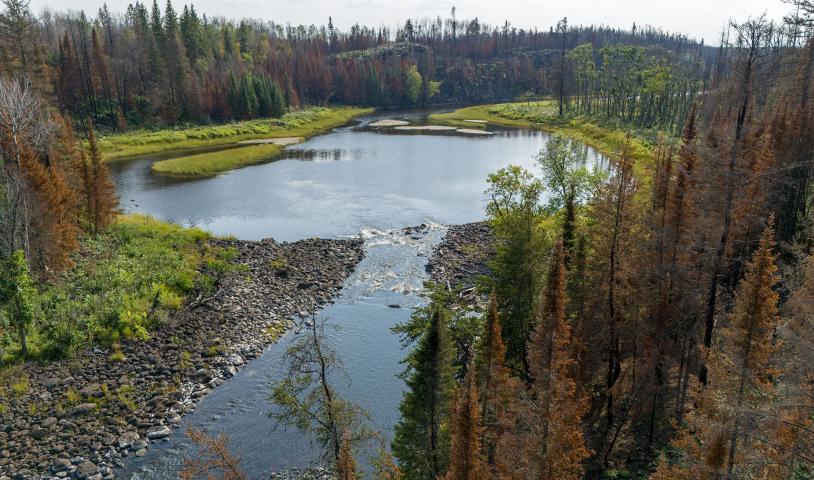
Protection for the paddle more important than ever
The lower Bird River is a cherished destination for Manitobans, but the forest fires of 2025 have scarred it for generations. Grand old trees that once shaded the wild river are charred skeletons now. The fragile nature enveloping this waterway is being forced through a transition, and will need careful management to again become the wildlife sanctuary it should be.
In late August 2025 I finally drove up to investigate the impacts of fire EA061 on the lower Bird River ahead of our paddle for protection canoe trip. We've been running trips here for more than a decade, keeping mining interests from damaging this sensitive waterway. But could we run a trip along this river that just suffered through climate-change-fueled wildfires the likes of which we’ve never seen before?
The Bird River Delineates
The Bird River is the end of hardtop heading up into lake country, where pavement on Highway 315 south of the bridge transitions to dusty gravel roads going north. On Labour Day weekend there were people everywhere on the river as I crossed the bridge, boating and swimming and sitting on docks in the warm sunshine. Cottages line the last few kilometers of the Bird River before it pours into the Winnipeg River. People love being out here on the very edge of the wilderness. Forty years ago I went to summer camp here too.
A great deal of firefighting effort was put in to save these private dwellings from the voracious burn of May 2025. The Tanco mine site is just off the river a dozen kilometers upstream, and massive public resources were directed towards fighting the fire for this corporate site. The Bird River for its entire length in the province became the line we were trying to hold. In Nopiming Provincial Park, Bird Lake and Tulabi Lake on the Bird River were the basic barrier keeping all of the cottages at Booster Lake, Flanders Lake and Davidson Lake intact. The river didn’t keep the fire back everywhere, but it did help little sections of the forest survive the devastation.
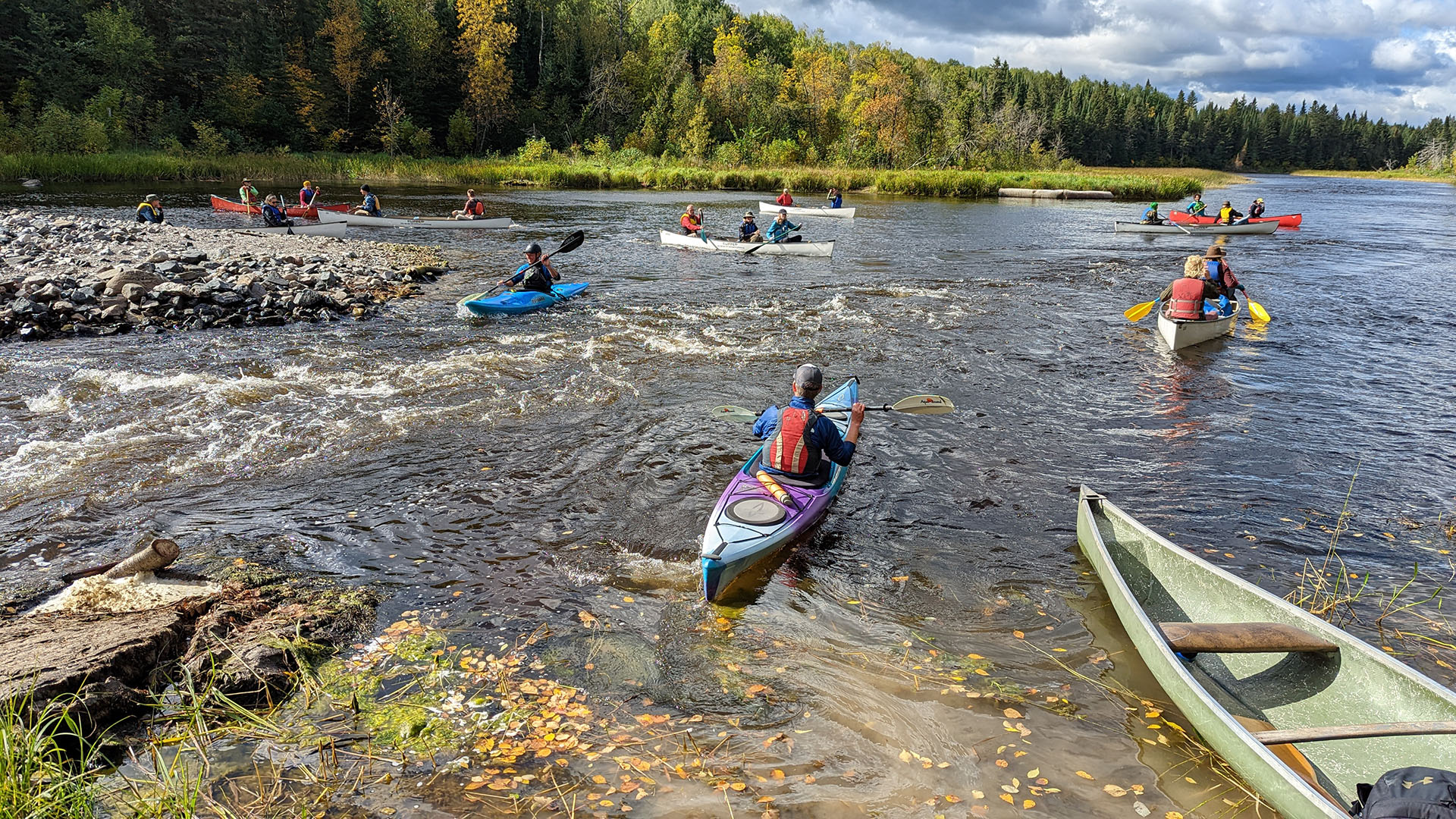
Paddle for Protection on the lower Bird
A dastardly plan to drain Bernic Lake into the lower Bird River surfaced in 2013, and the Wilderness Committee jumped into action. The mine company had contaminated the waters of Bernic Lake over decades, but then wanted to drain the lake so they could continue mining the lake bed. After digging for the truth of the situation and publicizing the facts, we got the government to dismiss the plan. In 2005 there was also a fight to keep logging company Tembec from taking down the big trees along the river. We decided we needed to push for permanent protection for this wild and scenic gem.
The first Paddle for Protection floated down the lower Bird River in 2014. More than a decade on, we’ve run this day trip with hundreds of people. We know that people become advocates for nature when they are exposed to it, and now there is a whole community of folks standing up for the Bird. We’ve been fortunate to be on the river with elected officials, Elders and youth from Sagkeeng First Nation over the years. This is Sagkeeng territory, and their decision making on the river is critical for reconciliation and decolonization.
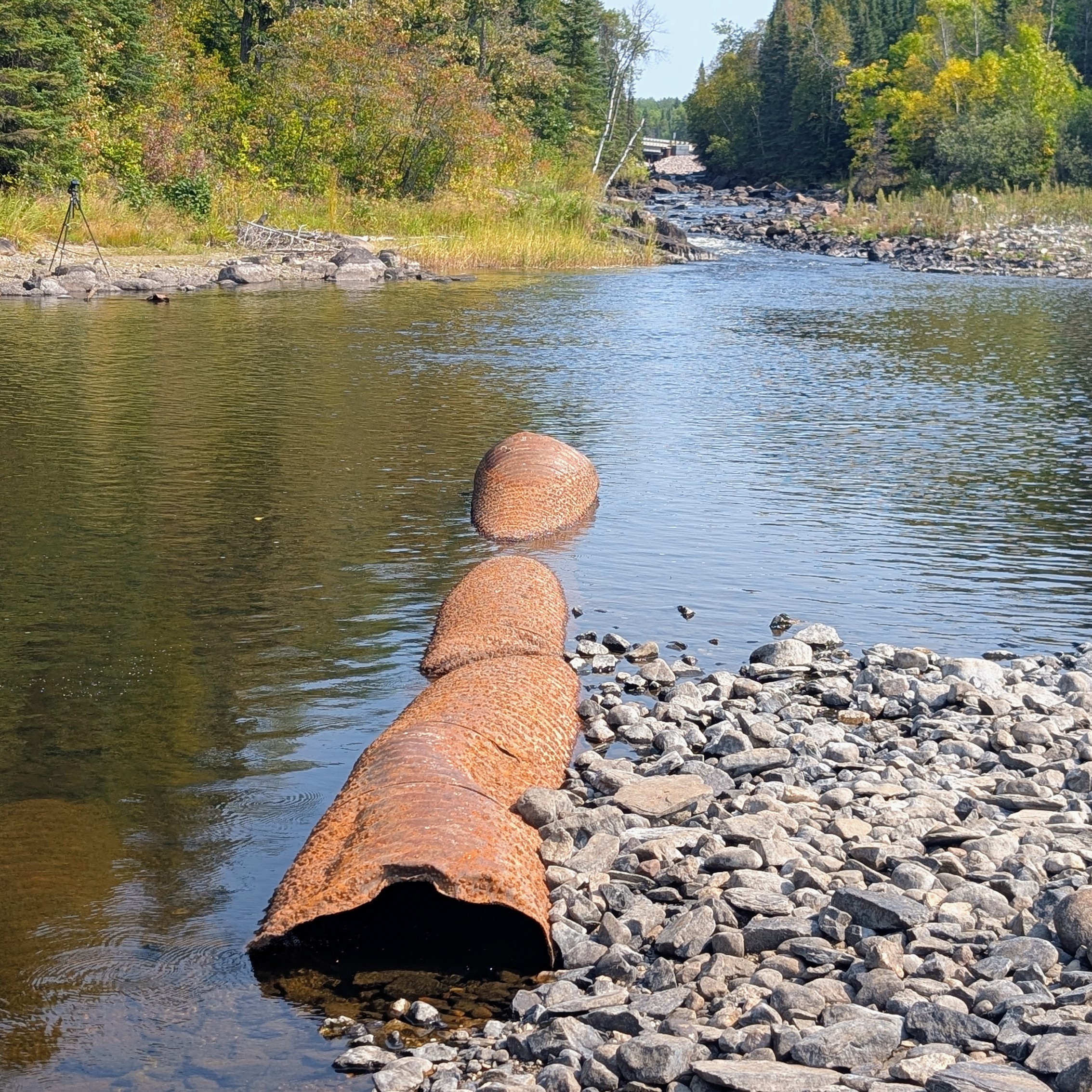
The Bird after the Burn
The launch site for our Paddle for Protection is below the rapids at the Tanco Mine Road bridge. As I got out of the vehicle to scout the put-in, I could hear trumpeter swans burbling on the river. I couldn’t see the magnificent white birds because here the forest is still green, a testament to the firefighting efforts to save the mine. I was confident that the 2025 paddle would proceed as I stood on the river’s edge, although the abandoned culverts from the mine road reconstruction are a blight in the river here. This year the water level is exceedingly low, but the paddling opportunity looked good.
Driving up to our lunch spot rapids deflated me. I walked into the burnt forest for the first time, stunned and silenced. The loss of thick vegetation is so jarring in an area you’re acutely familiar with. I sat for a while, tears welling up, feeling what this place is now. Gary Snyder’s The Practice of the Wild talks about a “sense of place”, and this place is different now. I watched a flock of geese open up and descend to the river a hundred yards away, because I could see the river clearly through the scarred black trunks spaced solemnly across the rock ridges. A stark whiteness caught my eye as I slowly made my way across blackened earth to our usual portage trail. The antler of a deer poked up above the sparse green shoots, from an animal that didn't make it through the smoke and fire. Wilderness can be unforgiving and make us weep, but there's more at work here than nature.
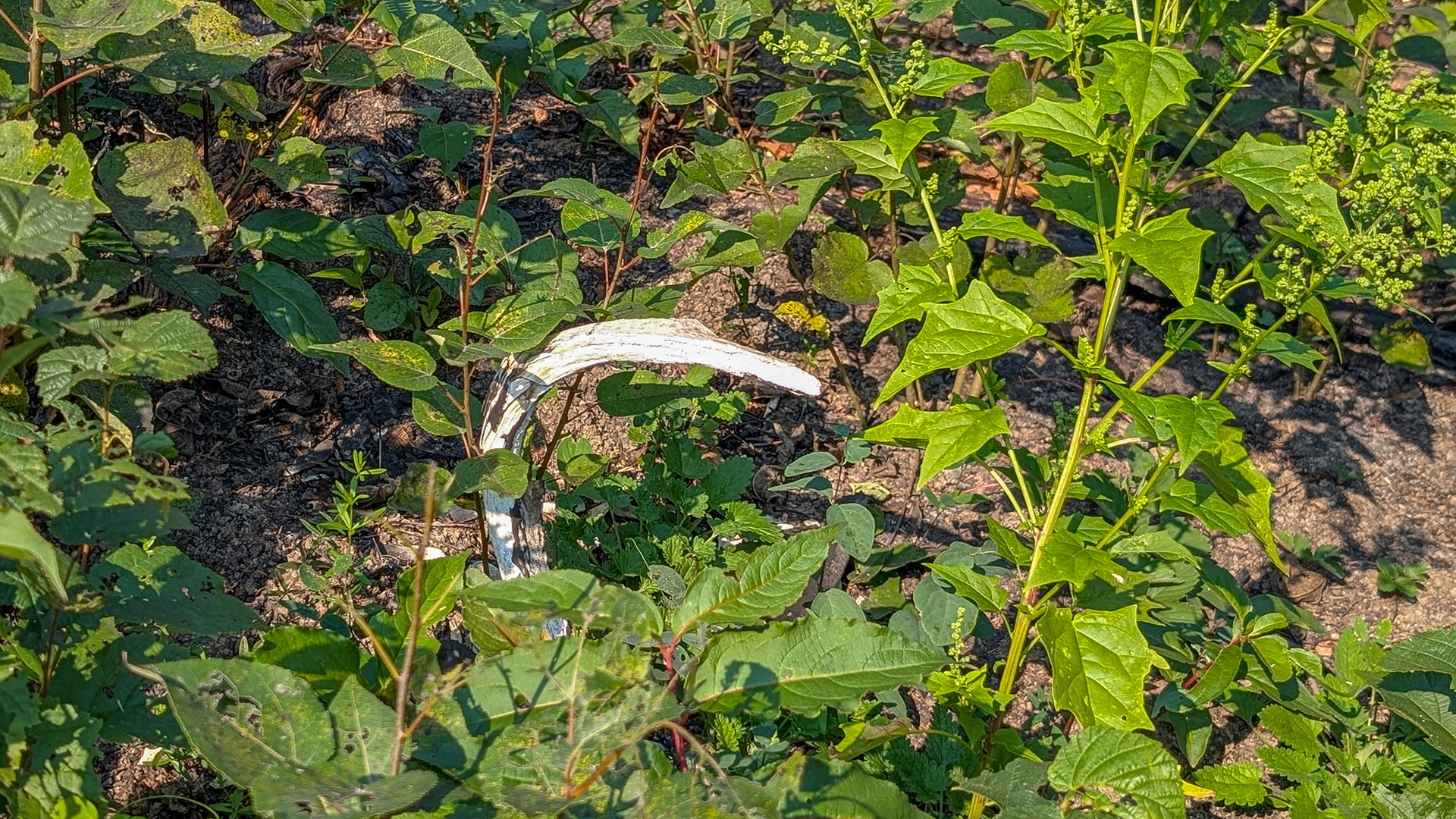 I walked the old path along the river, where for 10 years I trimmed greenery so we could pass through with our canoes. The whole trail is burnt. Afterwards I put the drone up to look at the waterfall portage and found it was burnt too. It became clear that there would be no paddle for protection on the lower Bird River in 2025.
I walked the old path along the river, where for 10 years I trimmed greenery so we could pass through with our canoes. The whole trail is burnt. Afterwards I put the drone up to look at the waterfall portage and found it was burnt too. It became clear that there would be no paddle for protection on the lower Bird River in 2025.
Rebuilding the lower Bird with protection
Now is the time to permanently protect a park along the entirety of the Bird River. We kept contaminated waters out of the lower Bird and we saved the large trees that lined its bank, but after the 2025 fire the river absolutely needs our protection. In this day and age we cannot just hope that waterways and nature will be fine on their own. This ecosystem is at its most vulnerable right now. Animal’s homes have been disrupted, and vegetation needs to find purchase in a harsh landscape. 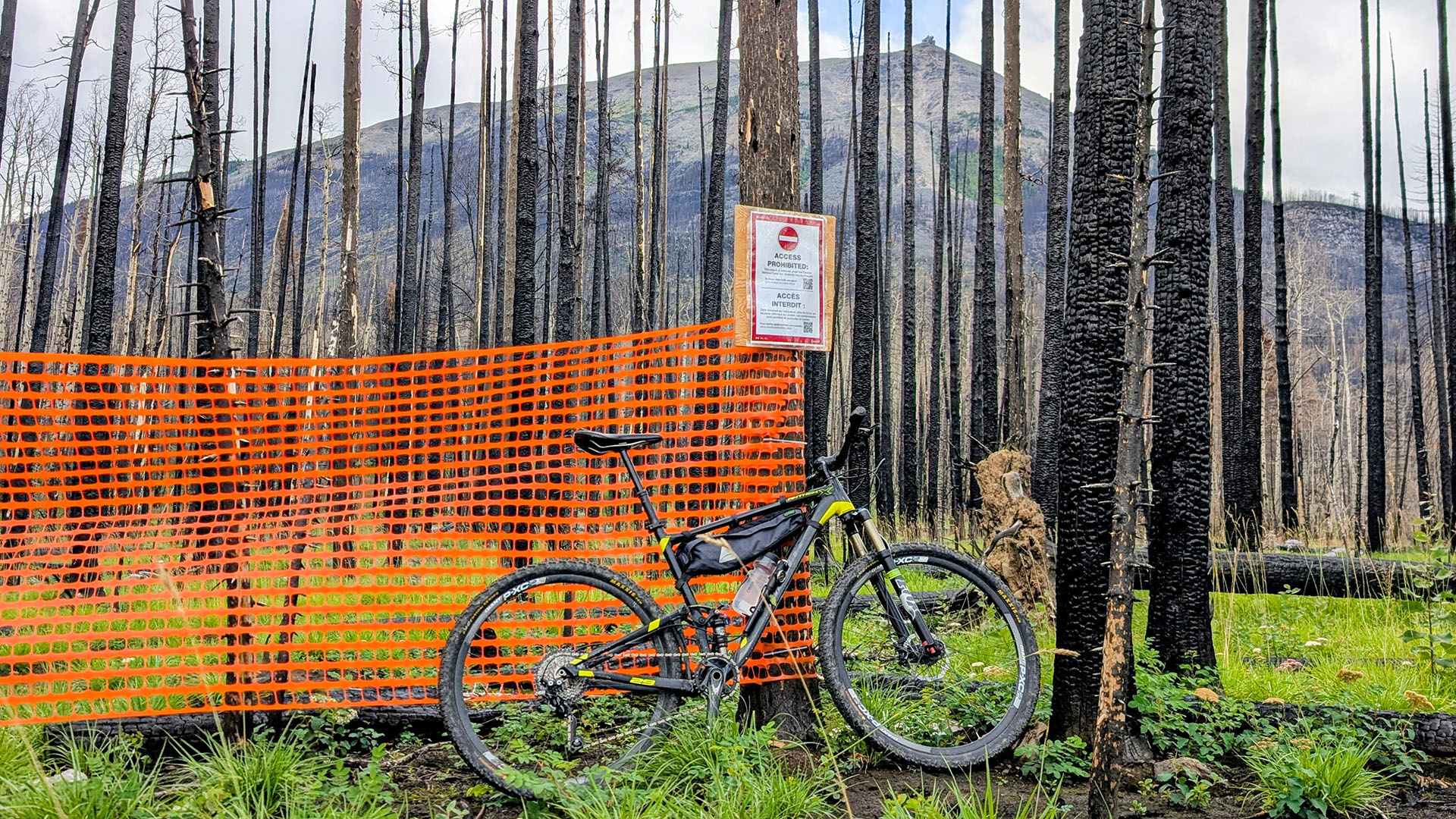
I've visited Jasper National Park twice now this year to understand how they are recovering from wildfire devastation. Biking through the blackened trunks across a barren landscape was a somber cycle. I rode up to a fence across the trail, with signage stating the area was closed to let the park recover from the fires. This is what's needed after a fire, but I haven't heard these sentiments about Manitoba. Already I've witnessed all-terrain vehicles driving through the burnt forests, which have become easier to navigate. But we know we must actively allow nature to recover along the Bird River and elsewhere. Both recreation and industry must be controlled.
An Era of Fire stoked by fossil fuels
Protecting the Bird is one small step for nature after the 2025 fires, but the real effort must be to act on climate. People lost their lives this year. Folks lost their homes and businesses. First Nations have been evacuated from their homes for months. No conversation about the future we need can skip a demand that we get ourselves off fossil fuels. Until we act on climate, the lands and waters we love and rely on as our life support system will face ever-growing risks… and so will we.
